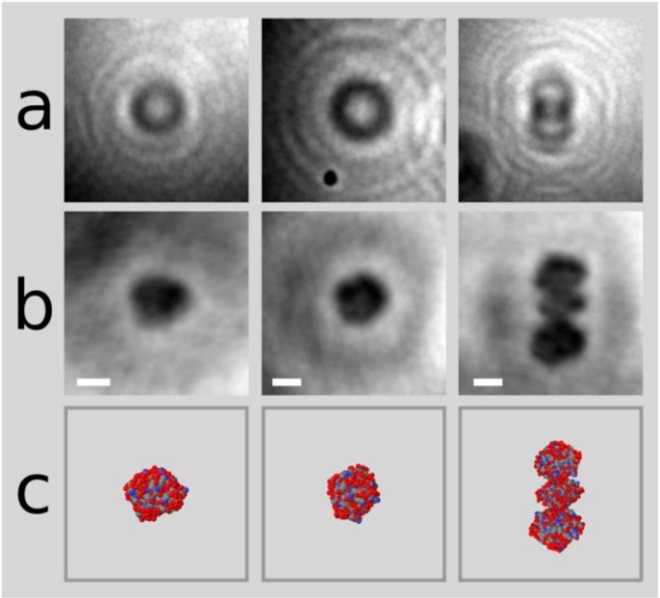
In the human body, there are thousands of different proteins.Each protein has a unique shape that determines their unique features.Scientists have so far are hard to capture the image of a single protein.The problem is that high power tools often lead to damage fragile protein structure, so the researchers take the millions of pictures, to fully understand a protein crystal structures.The images generated by these tools, often vague, and some proteins cannot be photographed, because they do not form crystals.
Now, a research team has new Graphene materials can be used to capture the image of a single protein.According to a study recently published on the arXiv, this protein images obtained using the new material Graphene is the first high resolution images for a single protein.
When you capture the image of a single protein, researchers the protein solution and mixed into the very thin Graphene sheet.Then they used a hologram of low energy electron microscopy, by jumping electron beam to hit the protein, and recording of these electrons interact with other electronic images.This low energy electron beam ensures that protein structure does not appear too much damage.Different from other imaging methods, researchers use holography electron microscope to ensure the integrity and reliability of protein structure.Using computer technology, researchers used holography electron microscope images to reconstruct the original structure of the protein.

Image of cytochrome c.A) cytochrome c protein obtained from holography electron microscope images.B) three different protein reconstruction of the viewing angle.C) using computer technology to digitally reconstructed model of proteins from different angles.(Photo: Jean-Nicolas Longchamp et al, 2015, arXiv)
Researchers seeking to resolve itself of structures and compared several already known protein structures, such as hemoglobin (the oxygen-carrying protein in red blood cells), bovine serum albumin (commonly used in the laboratory of protein) and cytochrome c (electron transfer within the cell).They compared the image obtained and compared with other imaging technology and image, and found that their pictures have more clarity.Researchers next hope to obtain images of proteins in other unresolved.If scientists get a better understanding of protein structure, they can find the possible existence of misfolded proteins, such as Alzheimer's, Parkinson's and Huntington's disease-related proteins, this research on basic biology and human health benefits.
